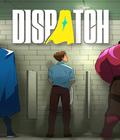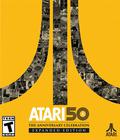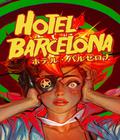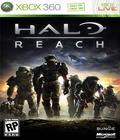In “Halo: Reach,” players experience the fateful moments that forged the “Halo” legend. It’s the story of Noble Team, a squad of heroic Spartan soldiers, and their final stand on planet Reach, humanity’s last line of defense between the terrifying Covenant and Earth. This darker story is echoed by grittier visuals amid a backdrop of massive, awe-inspiring environments. Characters, enemies and environments are rendered in amazing detail by an all-new engine designed to deliver epic-scale encounters against the cunning and ruthless Covenant.
WP: Who has the honor to speak with us? State your name, rank and occupation!
I’m Marcus Lehto, and I'm the creative director of Halo Reach.
WP: From a tech standpoint, Halo Reach is brand new. What is some of the back-end work that's gone into the engine from Halo 3 to Halo Reach?
ML: Well, we started with Halo 3 when we began this project. Right after Halo 3 ended, we started prototyping Reach using Halo 3's engine as our springboard. We realized, as soon as this title started to take shape and we understood how big the vistas were going to get and how many characters we really wanted to put out there, that the engine itself needed a pretty significant overhaul to accommodate that vision. So we started primarily with a graphics engine. That was one of the major areas that we tackled first. It allowed us to pour more polygons, more high-resolution textures into our characters and all of the environments themselves. But we didn't stop there. We definitely took advantage of retooling our AI systems, our UI systems, our networking for multiplayer and everything else that went into it because everything else across the board was bigger in general.
WP: One of the big differences with Halo 3: ODST was the way the story was focused. It was a much more personal story in ODST when you're dealing with the individual members of the squad, versus the prior games, where it was more of an epic feel. What kind of story approach are you taking with Reach? Are you going for the earlier, traditional Halo epic feel, or are you going for a more personal, on the ground, in the nitty-gritty of things?
ML: That's a really good question. I can honestly say that it's a combination of both because we are heading down into the trenches of battle to witness the war from Noble Team's perspective, but it is an epic battle of epic proportions. I mean, it is a global battle that is being waged on the planet Reach, so we will see that and we will experience that through the eyes of the Spartans and through the eyes of you, the player.
WP: In the prior games, the events have played out new for the players, but there's been a lot of fiction in the Halo universe, and with Reach, the Battle of Reach is obviously known to the people who have been following the novels and the backstory. What kind of design challenges did that present when you were exploring an area that wasn't new and fresh? You actually had some set framework that you were locked into when developing Reach.
ML: One of the things that we made a conscious decision to do was not make a game about the story of the Fall of Reach novel. This is not that. It's a totally brand-new story. It takes place on the planet Reach, certainly, and Reach is a fictional planet that we created many, many years ago. The story does throw some nods to some of the fiction that was written in the novels and such, but it is a wholly new story with new characters, everything is all new. So we had the opportunity to cut some of those cords and have the freedom to really build in a rich and really interesting story. The only framework that we had that confined us was the fact that Reach did fall to the Covenant. It's like the Titanic. It's a story that you know from beginning to end, but what you don't know is what happened in between. What happened to all those characters, with Noble Team?
WP: Gameplay-wise, since Halo 2, the Halo series has been pushing the multiplayer aspect quite heavily. Halo has also been a game changer in the way matches were made, the clans and the custom matches. What advances in the multiplayer await us in Reach?
ML: Well, I can only answer some of those today, but really what we're doing is building upon all of the unique features that we have been continuing to build for our fans and community that are so important to multiplayer within Halo games. We'll be taking those and adding brand-new features on new game types and new ways in which fans can hook up in parties and play awesome multiplayer. But I can't go into specifics on them today.
WP: How about the single-player portion? Can you talk about any new weapons or vehicles that we'll see in the single-player mode?
ML: Sure. For both single-player and multiplayer, we try to make our sandbox apply to both throughout the game, so we definitely have a ton of new weapons that are going to enter into this game. We showed a couple of them here at the X10 Microsoft event. The designated Marksman Rifle and the new Needle Rifle are both fantastic mid- to long-range weapons that are precise. They're really fun to play with and are really going to add a great new strategy to gameplay, both in campaign and multiplayer.
We've got new vehicles entering the mix as well. One of them we saw in the Video Game Awards trailer was the Falcon. It's a really cool new aerial vehicle that we've got entering both campaign and multiplayer.
WP: There are a lot of Halo fans out there. The Internet is awash with blurry cell phone camera leaked photos and rumors of Project Natal. What's it like being inside, knowing that the fans out there will go over a blurry photo for hours and hours, just trying to figure out something? Are you flattered? Are you frustrated? What's the reaction on the inside?
ML: We realize that, with everything that goes out there, with every beta or alpha that we put out there, something's going to leak, and it's terrifying to us. It's terrifying because the game's still in progress. We're making it still, and we're going to continue working on it for quite some time until it's done. It's shipping this fall, but we've got a lot of work, a good handful of months in front of us before it's completely done. To put stuff out there, like the beta, we understand that we're going to do our best to make it as good as we possibly can. Even the things we showed here today, they're not done yet, but we realize that stuff is going to get out to the public and we're going to get scrutinized as a result. That's part of making games that we just deal with.
WP: As for the Project Natal rumors, obviously Reach isn't using it, but did you guys ever experiment with the motion controls? Was that something that was borne out of a little bit of reality, or was it an Internet rumor with no basis whatsoever?
ML: Well, unfortunately, Natal came along too late for us to integrate into our game in a real way, so that's really the reason why it didn't happen, but it's a neat piece of hardware so we wish the best for it in terms of people jumping in and making awesome games for it.
WP: Character-wise, Nathan Fillion: loved him in Halo 3, loved him in ODST. When we interviewed him for ODST, he said he was a huge fan and he'd love to be in Reach if you guys would have him. Is there any involvement with Nathan?
ML: There may be. I don't know.
WP: We'll say that's a very promising answer. As far as the multiplayer beta, you've given us a date. Can you tell us what we can expect in terms of number of maps or gameplay modes?
ML: I can't go into specifics other than to say that on May 3, we'll be releasing a good handful of maps for multiplayer, some new features, new things like armor abilities that the fans will get to play around with, new gameplay modes that we've never had the opportunity to play at all before. We're really excited to have fans sink their teeth into them and give us some good feedback on them.
WP: Do you have any idea about how long the beta is set to run?
ML: I can't give you specifics on that either, but it is a finite period of time.
WP: On the backend, what does the team get out of the beta? What are you looking for while everyone's playing? With an open beta, you don't have people submitting bug reports, and you don't get the feedback that you would get from a closed beta or professional beta testers. What type of information do you get when you just throw hundreds of thousands of players at a game?
ML: It's actually going to be millions of players in this case, which scares us even more. We're ready for it. There are real things, like the infrastructure, the networking that we'll be stress-testing to handle that many players, and that's real, hardcore data that we'll be using to improve the game overall. On the aesthetic side of things, what players really want and like about the game and what they would love to see improved, we listen to them. Yeah, there's no official bug report that they file in that case, but we definitely listen to them. We want to make sure that what they're playing, they're enjoying and that what they're playing, they're doing it to the best of their ability. We can really act upon that, then, for the final game.
WP: If you had to sum it up in two to three sentences, what really makes Halo Reach a game that's worth playing?
ML: Well, it is absolutely a culmination of over a decade's worth of effort and expertise from the studio that actually built it, Bungie Studios. So we're really excited to put all of the best parts from Halo 1, 2, 3 and ODST all into Reach, add new features on top of it, and really make what I believe is the most powerful Halo title that we've created to date.
WP: Is there anything about the game that we haven't talked about that you wanted to add?
ML: We have put all of our best people on this project. We have really put every bit of effort we possibly can into making sure that this is the best Halo title to date.More articles about Halo: Reach











 Step into the boots of a Spartan III, as Halo: Reach charts the story of Noble Team in their heroic stand to defend the planet Reach, its people and secrets against a ruthless assault by an alien collective known as the Covenant.
Step into the boots of a Spartan III, as Halo: Reach charts the story of Noble Team in their heroic stand to defend the planet Reach, its people and secrets against a ruthless assault by an alien collective known as the Covenant.